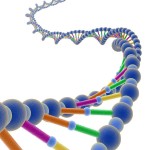|
|
Pam Gray, Bonaventure Senior Living COO, has noticed a distinct shift in how individuals go about tracing their family histories. For seniors interested in understanding their own unique legacies, Pam Gray, Bonaventure Senior Living COO, presents the important elements of genetic testing. ZRYLW: How has genetic testing changed in the last decade? |
Pam Gray, Bonaventure Senior Living COO: In the early stages of genetic DNA testing, individuals were forced to build their own studies. This is still a viable option, though more tools are now available.
ZRYLW: Is there a better way to go about it?
Pam Gray, Bonaventure Senior Living COO: Joining an existing project is more beneficial these days. Newcomers can be inundated with information, and this allows the first-time user to have assistance in their search.
ZRYLW: How does an existing process ease stress?
Pam Gray, Bonaventure Senior Living COO: By taking part in a project that’s already started, seniors have the ability to focus on names that appear throughout their family trees.
ZRYLW: Where does one begin?
Pam Gray, Bonaventure Senior Living COO: Several options exist, but most of those involve the Internet. If a computer is not available at home, the local library will offer Internet services to visitors.
ZRYLW: What is a common website for these purposes?
Pam Gray, Bonaventure Senior Living COO: There are several options available online; one of these can be found at dna.ancestry.com.
ZRYLW: What are some other alternatives?
Pam Gray, Bonaventure Senior Living COO: Public access databases are often searchable by surname and offer contact information for submitters. These databases include ysearch.org and familytreedna.com.
ZRYLW: Can an individual just use Google?
Pam Gray, Bonaventure Senior Living COO: Many surname projects own websites, so a “surname DNA” query on the chosen search engine will display the desired result within the first few listings.
ZRYLW: What information is required to begin?
Pam Gray, Bonaventure Senior Living COO: Information about the earliest known ancestor and the individual’s connection to this person through generations is necessary. Additional relations will increase the likelihood of success.
ZRYLW: Is genetic testing convenient?
Pam Gray, Bonaventure Senior Living COO: Most websites feature a link for ordering a genetic testing kit right from the testing company. The administration will automatically be notified of the individual’s participation.
ZRYLW: What stipulations are in place?
Pam Gray, Bonaventure Senior Living COO: The individual must sign a consent form to release the testing company of any responsibility.
ZRYLW: How is one notified of a match?
Pam Gray, Bonaventure Senior Living COO: Immediately after a match has been found, administration posts information directly on their websites for perusal by participants.
ZRYLW: What are the odds of a match?
Pam Gray, Bonaventure Senior Living COO: Results vary depending on the individual, but participants in genetic testing can discover nieces, nephews, cousins and other close relatives.
Pam Gray, Bonaventure Senior Living COO, started in her position in 2007. She has more than 20 years of experience working in the field of retirement living.
